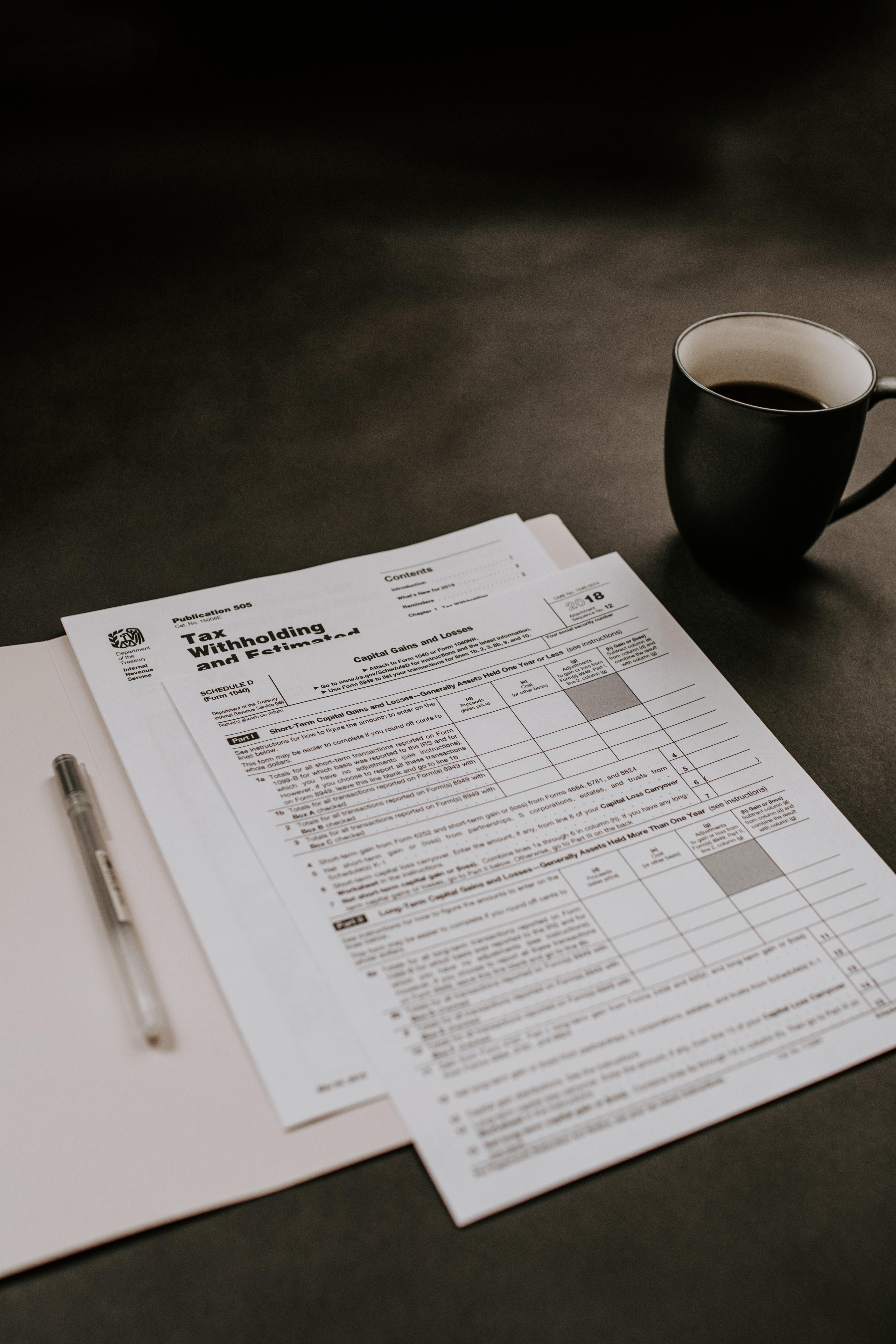How To File Taxes With An ITIN
If you’ve ever looked at Form 1040, the one individuals use to file a U.S. federal income tax return, you may have noticed that one of the first pieces of information requested is a Social Security number (SSN). The IRS asks for this number from the taxpayer, spouse and any dependents listed on the return.
Despite the seemingly straightforward fields on the form, you don’t need an SSN to file a U.S. tax return. The IRS provides individual taxpayer identification numbers (ITINs) for people who don’t qualify for an SSN but need to file a return. If you’re in that group, read on to learn more about how to get an ITIN.
Why Do You Need An ITIN?
U.S. citizens aren’t the only ones required to file tax returns. Nonresident aliens, U.S. resident aliens, and their dependents or spouses may be required to file. Typically, the IRS uses an SSN to process tax returns and account for tax payments. But not all taxpayers are eligible for an SSN.
According to the Social Security Administration (SSA), only non-citizens authorized to work in the U.S. can get an SSN. You’ll need to either apply in your home country before coming to the U.S., or visit a Social Security office in person once you arrive in the U.S. If you visit an SSA office in person, you’ll need to show documentation to prove your identity and work-authorized immigration status.
So, if you are required to file a return but aren’t eligible for an SSN, you need an ITIN.
Who Needs An ITIN?
The IRS Instructions for Form 1040NR include detailed information on the filing requirements for nonresident aliens. This generally consists of all nonresident aliens who:
- Do business in the U.S. or have earnings from self-employment
- Received income from U.S. sources and did not have all of the tax they owe withheld from that income
- Owe special taxes, such as the alternative minimum tax, additional tax on an IRA or another tax-favored account, household employment taxes, Social Security or Medicare taxes on tips
- Received a distribution from a health savings account (HSA), Archer medical savings account (MSA) or Advantage MSA account
- Received an advanced payment of the premium tax credit or health coverage tax credit
IRS Publication 501 includes more information on filing requirements for resident aliens, which are based on filing status, age and gross income.
How To Get An ITIN
Once you’ve determined that you need to file a tax return but aren’t eligible for an SSN, there are two ways to apply for an ITIN: by mail or in person.
The Application

The first step in applying for an ITIN is to complete Form W-7, Application for IRS Individual Taxpayer Identification Number.
In addition to Form W-7, you’ll need to provide documentation to prove your identity and foreign status. The instructions for Form W-7 include a list of acceptable documents, including:
- Passport
- U.S. Citizenship and Immigration Services photo ID
- Visa issued by the U.S. Department of State
- U.S. driver’s license
- U.S. military ID card
- Foreign driver’s license
- Foreign military ID card
- National ID card containing your name, photograph, address, date of birth and an expiration date
- U.S. state identification card
- Foreign voter’s registration card
- Civil birth certificate
- Medical records (for dependents under age 6)
- School records (for dependents under age 18, if a student)
If you plan on mailing your application, the instructions say you can include either original or certified copies of the above documents, and your paperwork will be returned to you at the mailing address listed on your ITIN application within 60 days. However, you risk having your original documents lost in the mail. For that reason, it’s a good idea to either get certified copies of your original documents or apply in person.
If this is your first time applying for an ITIN, you will submit your application with your tax return. You won’t be able to file your tax return electronically without an SSN or ITIN, so simply attach Form W-7 to the front of your ITIN and leave the SSN area blank for anyone on the return who is applying for an ITIN (such as a spouse or dependent).
There are a few exceptions to the requirement to apply for an ITIN with your tax return:
- You get third-party withholding on passive income
- You receive salary, wages, honoraria payments, gambling winnings or other compensation that is exempt due to a tax treaty
- A third party reports your mortgage interest
- You’ve profited from the sale of property within the U.S.
- You have reporting obligations under Treasury Decision 9363
These exceptions, and the additional documentation you must submit with your ITIN application, are explained in greater detail in the Exceptions Tables in the IRS Instructions for Form W-7.
Submitting The Application

Once you’ve completed Form W-7 and collected the required documentation, you can apply via the following methods:
To apply by mail:
Mail Form W-7, your tax return (unless one of the above exceptions applies), and other required documents to:
Internal Revenue Service
ITIN Operation
P.O. Box 149342
Austin, TX 78714-9342
To apply in person:
There are two ways to apply in person. You can use the services of an IRS-authorized Acceptance Agent or make an appointment at an IRS Taxpayer Assistance Center. The IRS maintains a list of Acceptance Agents on its website.
The IRS also maintains a list of Taxpayer Assistance Center (TAC) locations on its website. Assistance at a TAC is by appointment only, so call to schedule an appointment before showing up.
How Long Does It Take To Get An ITIN?
Once you submit your completed application and supporting documents, the IRS website states you should receive a letter assigning your ITIN within seven weeks. However, it may take longer during certain times of the year.
Most ITIN applications are filed with tax returns, so they are typically submitted during the peak processing times of January through April. During these months, IRS services often take longer, so the National Immigration Law Center cautions that it can take eight to 10 weeks to receive an ITIN during this time.
After your ITIN is approved, the IRS will process the tax return submitted with your application within six to eight weeks. If you have trouble getting a response from the IRS or believe the IRS is not respecting your taxpayer rights, you may be able to get help from the fee Taxpayer Advocate Service.
Does An ITIN Expire?
ITINs remain valid as long as you file a federal return at least once every three years. If you don’t use your ITIN (or you have an ITIN issued before 2013 with middle digits of 83, 84, 85, 86 or 87), your ITIN may expire before you need it to file your tax return.
To renew your ITIN, you’ll use the same Form W-7 used to apply for a new number, but check the box for “Renew an Existing ITIN” in the upper right-hand corner of the first page. You will need to include all required documentation with your application, but you do not need to submit a tax return.
The IRS recommends applying for your ITIN renewal as soon as possible if your ITIN will expire by the end of the year and you anticipate needing to file a return. Renewing your ITIN outside of peak processing times will allow your application to be processed quickly, and having a valid ITIN at tax time may make your return eligible for electronic filing, which the IRS says is “faster, safer and more accurate than mailing your tax return.”

The Bottom Line
Navigating the forms and documentation requirements for getting an ITIN can be daunting. If you need help, apply in person with the help of an IRS-authorized Assistance Agent or by making an appointment at a Taxpayer Assistance Center. By getting help to ensure you have the right supporting documents and taking time to double check that all of the information on your application is correct, you’ll reduce the chance of having your application rejected by the IRS.
THIS PIECE ORIGINALLY APPEARED ON SCORE AND WAS WRITTEN BY JANET BERRY-JOHNSON.






